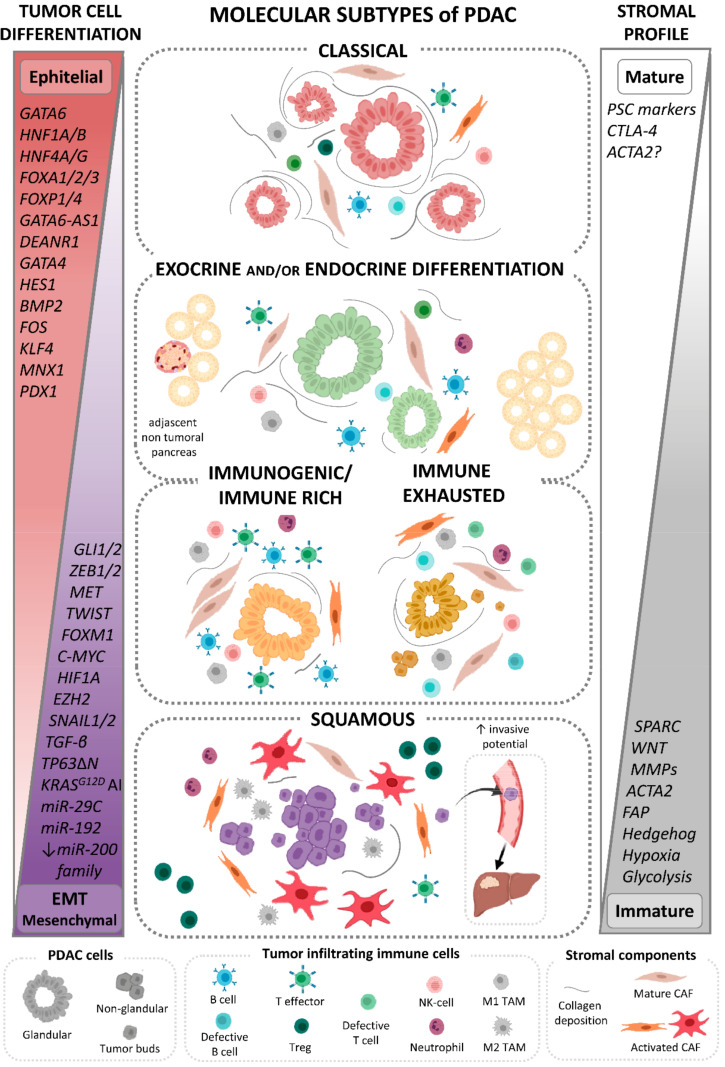Figure 1.
Key molecular, histopathological, and immunological features of the major molecular subtypes of PDAC defined based on the GEP of individual tumors. Classical, exocrine, and endocrine differentiated and immune-related PDAC harbor pancreatic epithelial cell differentiation driven by increased expression of endodermal identity genes (depicted in red), that are frequently associated with both low cellular collagen-rich (mature) stroma and variable profiles of tumor infiltrating immune cells. In contrast, squamous PDAC cells display histological dedifferentiation driven by the downregulation of pancreatic endodermal cell-fate determining genes and activation of EMT program (depicted in purple) to further acquisition of mesenchymal features, and are usually embedded in a highly cellular stroma enriched in activated CAFs (immature). EMT: epithelial-to-mesenchymal transition; PSC: pancreatic stellate cells; Treg: regulatory T lymphocytes; NK: natural killer cells; TAM: tumor-associated macrophages; CAF: cancer associated fibroblast; AI: allelic imbalance. (↓): decrease; (↑): increase. Created with BioRender.com.

